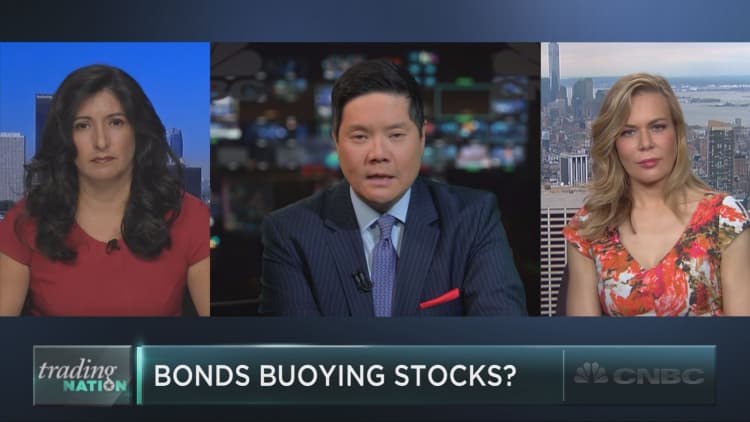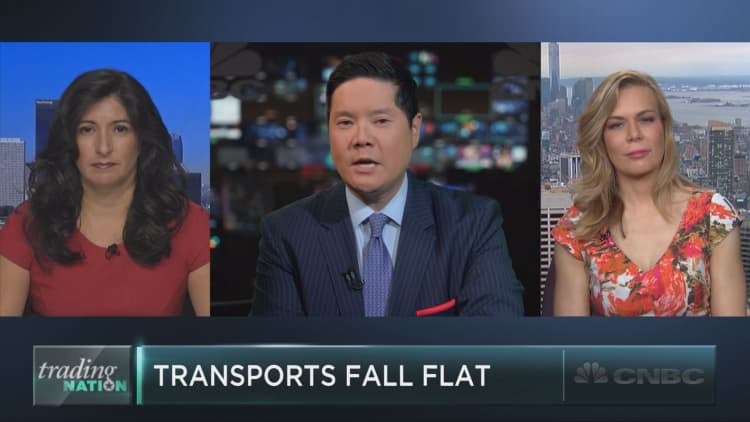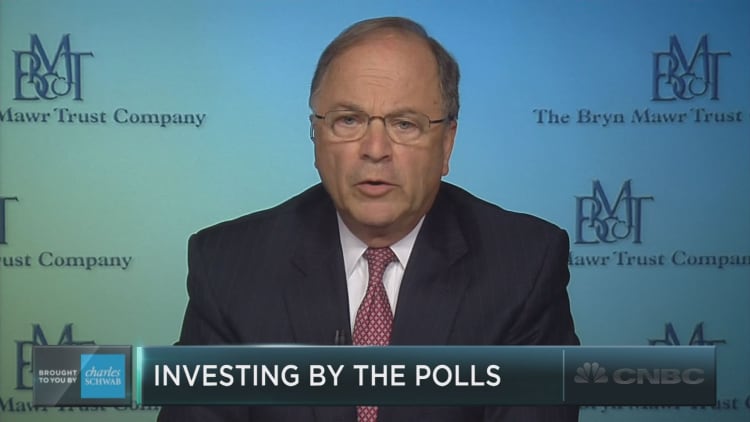


Stocks generally cheer economic growth, but a trend that's borne of stagnation and a meager outlook may actually be greatly supportive of equities.
Bond yields in the U.S. and around the world have been sliding all year, with the 10-year Treasury yield ending 2015 at nearly 2.3 percent and coming in around 1.75 percent today.
While this is partially due to a decline in perceptions of economic strength and expected inflation stateside, most market watchers see the global market playing a bigger role in the rate rout.
"It's really about the bond-buying programs in Japan and Europe, the negative interest rates that we're seeing making the rest of the world's bonds look so unattractive, and therefore people are piling into U.S. bonds and pushing those yields down," Erin Gibbs of S&P Investment Advisory said Friday on CNBC's "Trading Nation."
And to put bond demand in psychological terms, it may likely be described as a search for safety amid an uncertain economic environment.
"There is a shortage of safe haven assets," Gina Sanchez of Chantico Global said Friday on "Trading Nation." "The U.S. Treasury is one of those, and I think the need to buy these assets is really going to keep rates lower for longer."
Read More Investors flooding billions into this ETF may have unrealistic expectations
But just as (irrational) fear often begets opportunity, this dive into bonds makes buying stocks a more attractive prospect.
After all, the 's dividend yield is currently higher than the 10-year Treasury yield, a rare situation. While dividends are unlikely to be maintained in a worst-case economic scenario, a relatively rich dividend payout does grant a bit of a safety cushion to stocks. That is to say, if one thinks stocks will be able to show even a hint of the capital appreciation that they have typically provided, picking equities over bonds becomes an easy decision.
"As yields go down, people will also plow into U.S. equities because it's still going to be another attractive asset class," Gibbs granted, adding, "That's been making valuations high for quite some time."
Indeed, the current debate in the market concerns just how high valuations can fairly rise if bond yields stay low — particularly if growth continues to be elusive.
"We have seen great earnings and low sales numbers, and those sales numbers are telling us a story of no demand. If that's the case, then 19 times is way too high," Sanchez said, referring to the S&P's price-earnings multiple.
Still, there is no getting around the fact that low yields have been a serious tail wind for stocks. And if growth is sufficiently slow that the Federal Reserve does not see fit to raise rates this year, further tamping down on yields, stocks could continue to climb.
Another way of putting this? The famously topsy-turvy investing regime, in which low growth is bullish for stocks, may continue to be in effect.






